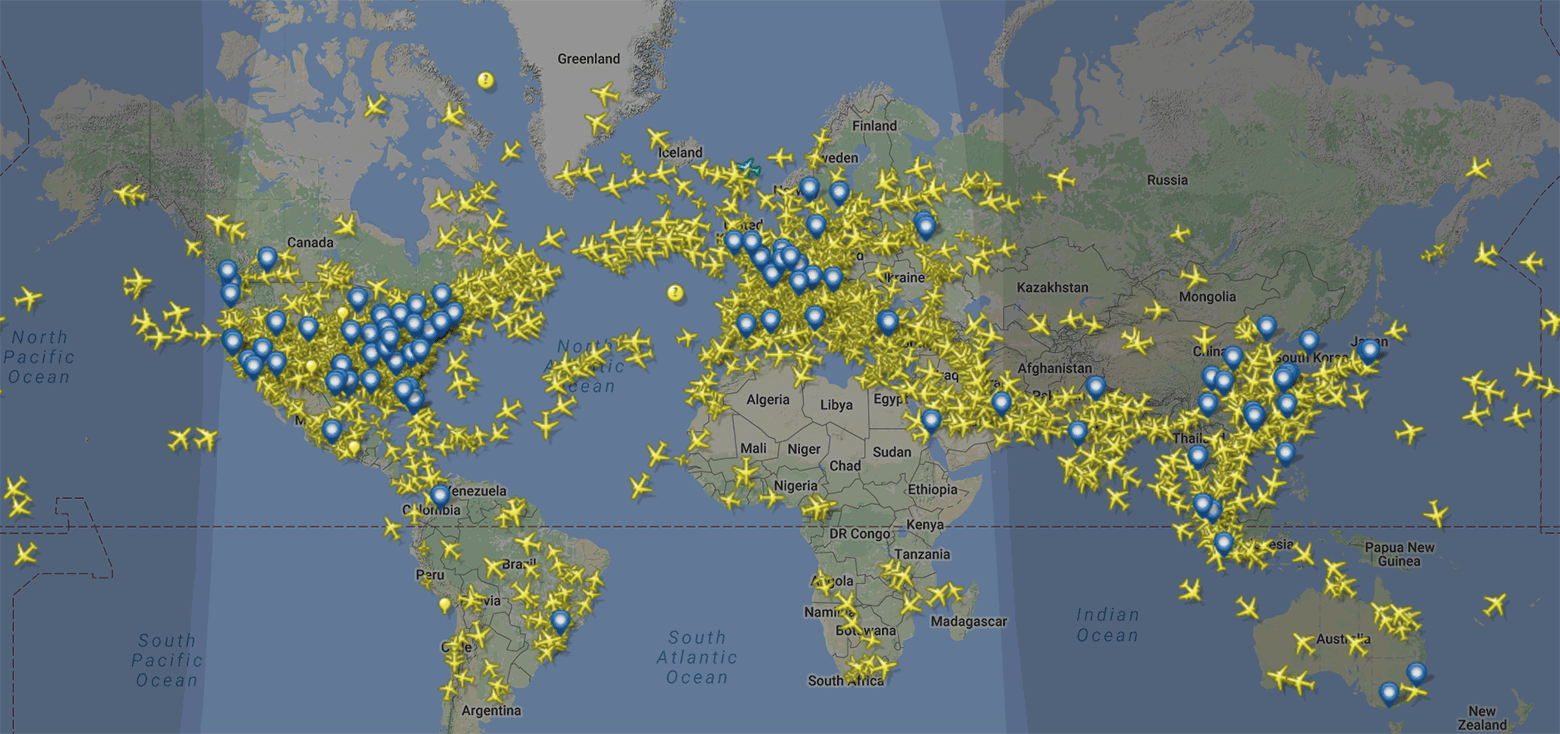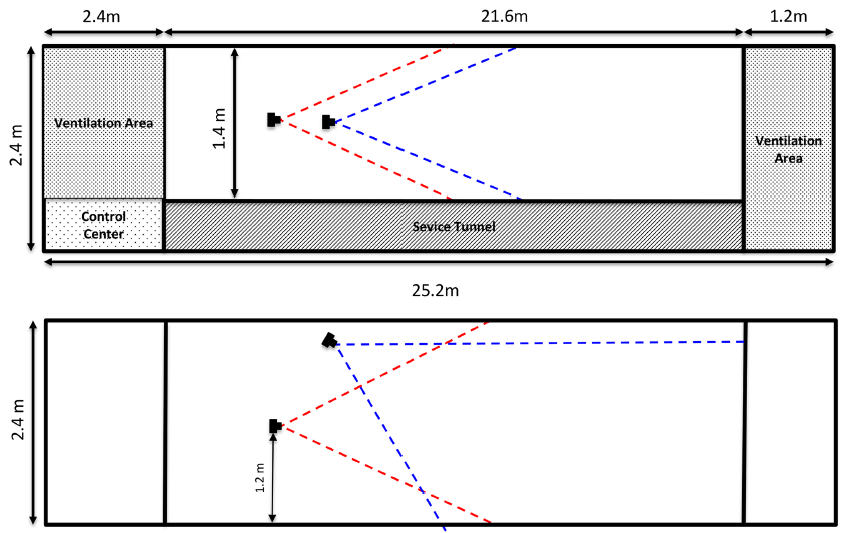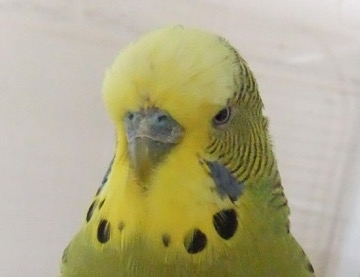In any difficult situation, fly to the right. Why birds do not collide in flight

Real-Time Aircraft Location
Every year more and more airplanes are in the sky: according to FlightRadar24 , 12,385 ships are in the air right now, and that does not include the military. After a few years, thousands of unmanned postal drones can join them to deliver goods and packages.
In this situation, the question arises: how to ensure the safety of air flights? Is there a way to create an automatic collision avoidance system to act on all manned and unmanned ships? Well, in the development of efficient navigation systems, the aviation industry can learn a lot from birds and insects. Birds mastered navigation in the air 150 million years ago, and insects - 350 million years ago. They have a big hand in the field of R & D.
Obviously, for a long time the evolution of birds and insects have developed certain algorithms for avoiding collisions in flight. Scientists suggest that such algorithms should be more effective in birds, because their body is not reinforced by the exoskeleton, like insects. Birds are heavier than insects and fly at higher speeds. They have fragile bodies. Obviously, the collision in flight will be very painful for the birds. Such a bird is less likely to leave offspring. That is, the system of avoiding collisions in flight is clearly a favorable sign in natural selection.
')
In previous years, scientists have investigated how birds walk away from obstacles , fly through narrow gaps and keep their distance in a flock . But the question has never been explored: what happens when two birds fly on a collision course. What do they do in this case?
Professor Mandyam Srinivasan from the University of Queensland (Australia) set the task of studying which particular strategies the birds use to avoid collisions on collision courses. To do this, on both sides of the tunnel with a length of 21.6 meters, pairs of birds were released towards a friend. Potential bird activities of interest were hypothesized in the Bayesian network to calculate their probability. The predicted probabilities were compared with the observed facts. In this way, researchers have drawn conclusions about collision avoidance strategies that affect birds.

Test tunnel. Blue and red dotted lines indicate the field of view of surveillance cameras.
Before the start of the test, 10 male budgies ( Melopsittacus undulatus ) of a male were trained to fly the tunnel from beginning to end alone.

Drongo, one of ten budgerigars who participated in the study
For 4 days, 102 experimental flights of 7 pairs composed of 10 budgerigars were recorded. There was not a single collision. Then, videotapes were analyzed with a fixation of how the birds shifted to the sides or in height as they approached each other.
The results were quite unexpected. As can be seen from the table, birds showed a tendency to almost always shift to the right, although the probability of such a shift varies greatly from individual to individual.

This is a very interesting conclusion. Earlier studies on bees showed that bees tend to shift to the left as they approach each other. One way or another, but the tendency to shift in a certain direction is important knowledge. Obviously, this knowledge should be the same for all individuals in the population. If the birds move closer to each other when approaching, then if you select left / right, the probability of a collision will be 50%.
Parrots in the tunnel flew at different heights. Scientists have discovered that some specific individuals clearly prefer to fly lower / higher than another specific individual, which does not fit the normal distribution.

The preference of a particular individual to fly above or below another individual
Despite individual cases of changes in altitude, as a whole, birds do not change altitude when approaching, but are displaced in a horizontal plane. Most often - right. Scientists conclude that wavy parrots have peculiar traffic rules sewn up at the “hardware level”. This may be due to the difference in the left and right hemispheres of the brain. Thus, in parrots, the right hemisphere and the left eye are responsible for tactical tasks, such as detecting a possible collision in flight. In turn, the left hemisphere and the right eye do other things, such as flight maintenance and speed control. By the way, this is one of the evolutionary advantages of animals with different functions of the left and right hemispheres (for more details, see the scientific work “ Survival with an asymmetric brain: advantages and disadvantages of cerebral lateralization ”).
Thus, the study confirmed that the presence of the simplest common rules would allow animals or machines to avoid collisions.
First, you need to agree to shift in one direction. It does not matter - to the left or to the right, but all should be shifted in one direction.
Secondly, to develop an algorithm for changing the height. One of the participants of the movement should move up, and the other - down. Rules for changing the height can be implemented in different ways. For example, assign a hierarchical sequence number to each individual aircraft. When meeting a plane with a higher number in the hierarchy is always shifted up, and from a lower one - down. The universal hierarchy is not easy to implement, and it also requires the exchange of information between ships before approaching. Another option is to set each plane a rule of randomly moving up or down. In this case, the risk of collision will decrease from 100% to 50%.
Scientists have not yet managed to understand how the birds choose the direction of displacement in height. Perhaps they also have a certain hierarchy.
Article published September 28, 2016 in PLOS One magazine (doi: 10.1371 / journal.pone.0162435).
Source: https://habr.com/ru/post/397895/
All Articles